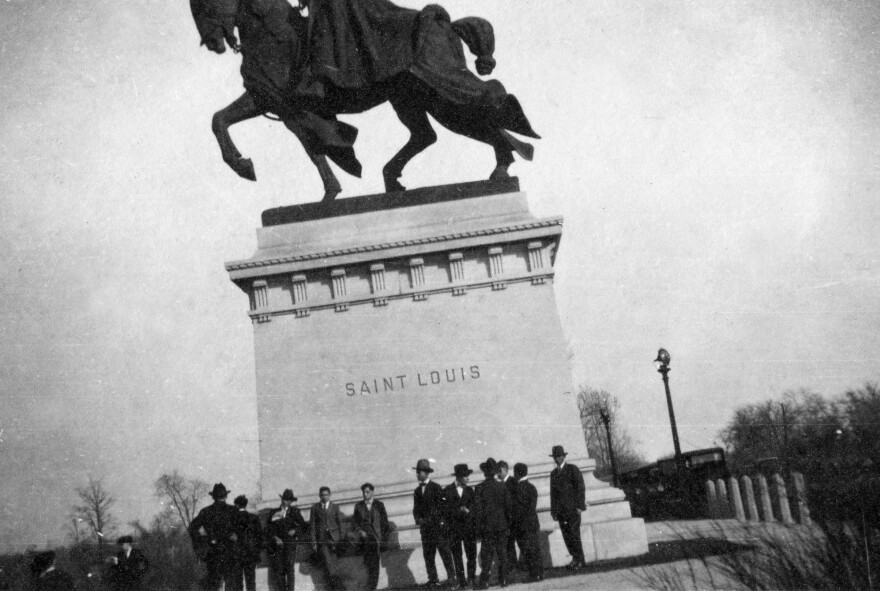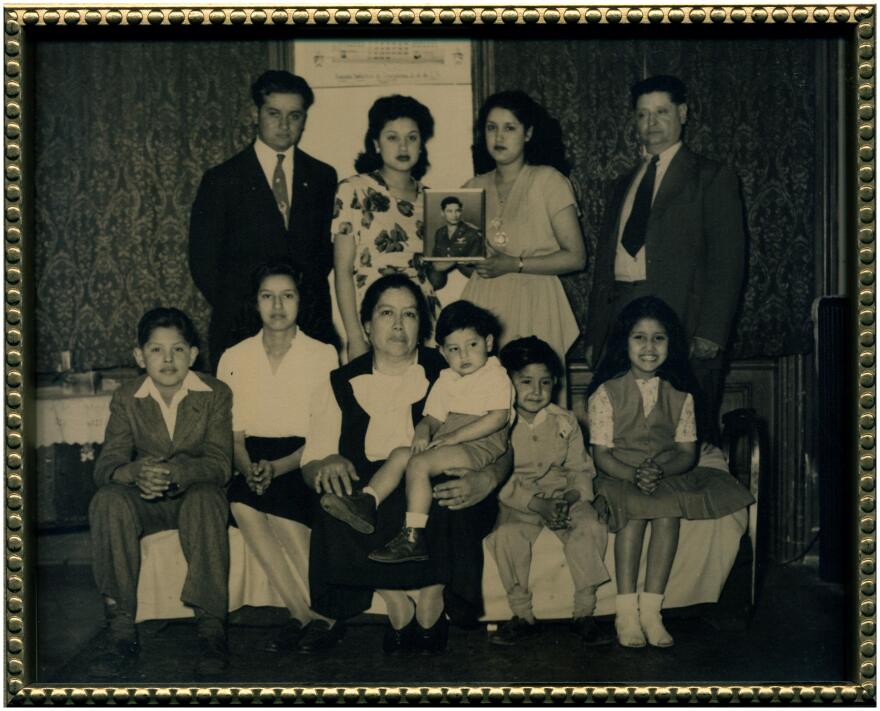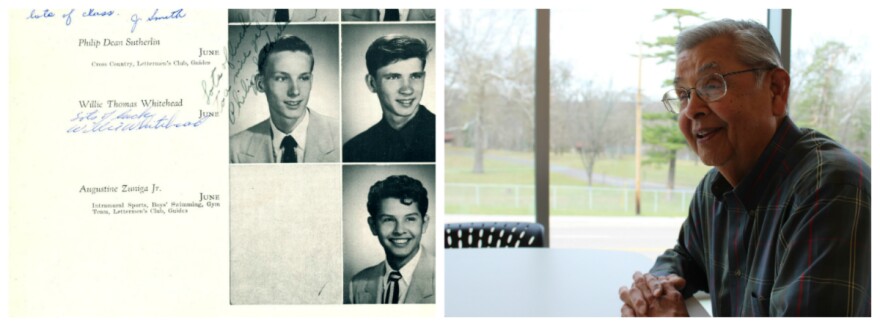Fewer than 4 percent of St. Louis city and county residents are Latino. While the Midwest as a whole has a reputation for very small Latino populations, St. Louis County Historian Daniel Gonzales says it wasn’t always on track to be that way.
Gonzales has been focused on uncovering forgotten narratives since he started his job about a year and half ago. One such story is the subject of an academic publication he's working on. It relates to the 19th and 20th century Mexican immigration to St. Louis, how the community was encouraged to blossom, and then pushed out.
“I think it's difficult to know what the Mexican community might have been like had so many not been forced to leave,” Gonzales explains. “The underrepresentation of Latinos in St. Louis has some roots in this early time period. It has implications for the realities of ethnic diversity in St. Louis.”
Mexican immigration into St. Louis
In recovery after the Civil War, St. Louis was searching for economic opportunities in the Southwest, and found a willing partner in Mexico's Diaz regime.

“St. Louis develops the largest trading relationship with Mexico of any city in the country,” explained Gonzales. “About seven and a half million dollars in trade per year. It had real implications of developing not just trading ties but physical ties in the form of railroad routes.”
Gonzales says in that early period of trade and prosperity, St. Louisans welcomed Mexican immigrants because the first wave were primarily wealthy, educated, and created economic opportunities for people locally.
“After the Mexican Revolution begins in 1910, you have refugees fleeing violence. These are no longer rich aristocratic individuals. These are poor folks who are struggling,” Gonzales said. “That is where you see the development of prejudices toward these new communities.”
Mass exodus
It was not just the Mexican Revolution, but also something that devastated the entire country — the Great Depression. The stock market crash of 1929 is what Gonzales calls the breaking point.
“As unemployment skyrockets suddenly these newcomers are perceived as taking opportunities away from U.S. citizens,” says Gonzales. “There was a perception a feeling that people of Mexican descent as a whole were less deserving of these opportunities.”
It wasn’t just in St. Louis. In his address to a joint session of Congress on December 2, 1930, President Herbert Hoover addressed “Immigration” and “Deportation of Alien Criminals” as part of his plan for the country’s economic plight.:
“Under conditions of current unemployment it is obvious that persons coming to the United States seeking work would likely become either a direct or indirect public charge….I urge the strengthening of our deportation laws so as to more fully rid ourselves of criminal aliens. Furthermore, thousands of persons have entered the country in violation of the immigration laws. The very method of their entry indicates their objectionable character, and our law-abiding foreign-born residents suffer in consequence.”
Gonzales says this message coming from federal officials influenced how state and local forces treated immigrants.

“We have records of the Mexican Consulate and they discuss huge numbers of unemployment and an expression by employers that they prefer to hire white U.S. citizens or other white immigrants over Mexicans,” said Gonzales. “They were facing hostility from the state, out of work, under siege — and in this environment they're presented with an opportunity to get on a train for discounted fare and ‘return home.’”
In other parts of the country there was a spike in deportations. In St. Louis, getting Mexican immigrants out of the country took the form of what Gonzales calls forced repatriations, or an aggressive suggestion that immigrants return to their countries of origin.
Gonzales says estimates are hard to find because census numbers are consistently inaccurate for this population. But his research has led him to believe that St. Louis lost about half of its Mexican population between 1929 and 1935.

“In St. Louis and certainly nationally, an environment was created that really left people with very little choice,” said Gonzales. “A lot of times we use the term ‘repatriation’ and it implies a voluntary decision. And while, technically, these are almost all voluntary decisions to leave, it’s a coercive sort of repatriation.”
Hold Outs
Gus Zuniga has lived in St. Louis his whole life. His parents, Agustin and Jesus, came to St. Louis from Mexico via New Mexico, for work on the railroad. Zuniga can still remember the family’s first house in the Baden neighborhood that his father made of discarded railroad ties.

“He collected a lot of ties, of course, to build this shack out in a floodplain. It had a dirt floor, and sheets between the rooms, and a potbelly stove to heat the house of course,” recalls Zuniga. A few years after he was born, Zuniga’s family rented a four family flat on Penrose and Broadway.
Because of his father’s steady job — a position Agustin Sr. held with Terminal Railroad until he retired — Zuniga and his family were able to weather the storm of the Great Depression.
“There were several families that lived in that Penrose area. But Mexicans were really scattered [across the city],” recalls Zuniga. “I mean, even today we don’t have a lot of Mexicans living close together here. We’re all spread out.”

Gonzales’ research has helped him to understand St. Louis’ Latino population, especially in contrast to the thriving communities in nearby Chicago. He thinks the story of this early migration has lessons for people discussing and acting on immigration policy today.
“We have this story that ties Latino people particularly Mexican and Mexican-Americans into the larger story of St. Louis,” said Gonzales. “If we want to be a welcoming place that includes everyone's story in the larger story we tell about ourselves — then we have to talk about what happened [here].”
Follow Jenny on Twitter: @jnnsmn




